An Electrochemical Study of the Effect of Sulfate on the Surface Oxidation of Pyrite
Abstract
1. Introduction
2. Materials and Methods
2.1. Materials
2.2. Preparation of Pyrite Working Electrode
2.3. Experimental Procedures
2.4. Analytical Methods
3. Results and Discussion
3.1. Characterization
3.2. Open-Circuit Potential (Eocp)
3.3. Cyclic Voltammetry (CV)
3.4. Tafel Polarization Curve
3.5. Electrochemical Impedance Spectroscopy (EIS)
4. Conclusions
Author Contributions
Funding
Data Availability Statement
Acknowledgments
Conflicts of Interest
References
- Hallberg, K.B. New perspectives in acid mine drainage microbiology. Hydrometallurgy 2010, 104, 448–453. [Google Scholar] [CrossRef]
- Schippers, A.; Kock, D.; Schwartz, M.; Böttcher, M.E.; Vogel, H.; Hagger, M. Geomicrobiological and geochemical investigation of a pyrrhotite-containing mine waste tailings dam near Selebi-Phikwe in Botswana. J. Geochem. Explor. 2007, 92, 151–158. [Google Scholar] [CrossRef]
- Tu, Z.H.; Wu, Q.; He, H.P.; Zhou, S.; Liu, J.; He, H.J.; Liu, C.M.; Dang, Z.; Reinfelder, J.R. Reduction of acid mine drainage by passivation of pyrite surfaces: A review. Sci. Total Environ. 2022, 832, 155116. [Google Scholar] [CrossRef] [PubMed]
- Chandra, A.P.; Gerson, A.R. The mechanisms of pyrite oxidation and leaching: A fundamental perspective. Surf. Sci. Rep. 2010, 65, 293–315. [Google Scholar] [CrossRef]
- Kutzschbach, M.; Dunkel, F.; Kusebauch, C.; Schiperski, F.; Börner, F.; Drake, H.; Klimm, K.; Keith, M. Arsenic-poor fluids promote strong As partitioning into pyrite. Geochim. Cosmochim. Acta 2024, 376, 37–53. [Google Scholar] [CrossRef]
- Tu, Z.; Guo, C.; Zhang, T.; Lu, G.; Wan, J.; Liao, C.; Dang, Z. Investigation of intermediate sulfur species during pyrite oxidation in the presence and absence of Acidithiobacillus ferrooxidans. Hydrometallurgy 2017, 167, 58–65. [Google Scholar] [CrossRef]
- Liu, Y.; Dang, Z.; Wu, P.; Lu, J.; Shu, X.; Zheng, L. Influence of ferric iron on the electrochemical behavior of pyrite. Ionics 2011, 17, 169–176. [Google Scholar] [CrossRef]
- Williamson, M.A.; Rimstidt, J.D. The kinetics and electrochemical rate-determining step of aqueous pyrite oxidation. Geochim. Cosmochim. Acta 1994, 58, 5443–5454. [Google Scholar] [CrossRef]
- Long, H.; Dixon, D.G. Pressure oxidation of pyrite in sulfuric acid media: A kinetic study. Hydrometallurgy 2004, 73, 335–349. [Google Scholar] [CrossRef]
- Hung, A.; Muscat, J.; Yarovsky, I.; Russo, S.P. Density-functional theory studies of pyrite FeS2 (100) and (110) surfaces. Surf. Sci. 2002, 513, 511–524. [Google Scholar] [CrossRef]
- Mazumdar, A.; Goldberg, T.; Strauss, H. Abiotic oxidation of pyrite by Fe(III) in acidic media and its implications for sulfur isotope measurements of lattice-bound sulfate in sediments. Chem. Geol. 2008, 253, 30–37. [Google Scholar] [CrossRef]
- Paschka, M.G.; Dzombak, D.A. Use of dissolved sulfur species to measure pyrite dissolution in water at pH 3 and 6. Environ. Eng. Sci. 2004, 21, 411–420. [Google Scholar] [CrossRef]
- Gu, G.; Su, L.; Chen, M.; Sun, X.; Zhou, H. Bio-leaching effects of Leptospirillum ferriphilum on the surface chemical properties of pyrite. Min. Sci. Technol. (China) 2010, 20, 286–291. [Google Scholar] [CrossRef]
- Pisapia, C.; Chaussidon, M.; Mustin, C.; Humbert, B. O and S isotopic composition of dissolved and attached oxidation products of pyrite by Acidithiobacillus ferrooxidans: Comparison with abiotic oxidations. Geochim. Cosmochim. Acta 2007, 71, 2474–2490. [Google Scholar] [CrossRef]
- Holmes, P.R.; Crundwell, F.K. The kinetics of the oxidation of pyrite by ferric ions and dissolved oxygen: An electrochemical study. Geochim. Cosmochim. Acta 2000, 64, 263–274. [Google Scholar] [CrossRef]
- Rimstidt, J.D.; Vaughan, D.J. Pyrite oxidation: A state-of-the-art assessment of the reaction mechanism. Geochim. Cosmochim. Acta 2003, 67, 873–880. [Google Scholar] [CrossRef]
- Senanayake, G. A review of chloride assisted copper sulfide leaching by oxygenated sulfuric acid and mechanistic considerations. Hydrometallurgy 2009, 98, 21–32. [Google Scholar] [CrossRef]
- Carneiro, M.F.C.; Leão, V.A. The role of sodium chloride on surface properties of chalcopyrite leached with ferric sulphate. Hydrometallurgy 2007, 87, 73–82. [Google Scholar] [CrossRef]
- Chandra, A.P.; Gerson, A.R. Redox potential (Eh) and anion effects of pyrite (FeS2) leaching at pH 1. Geochim. Cosmochim. Acta 2011, 75, 6893–6911. [Google Scholar] [CrossRef]
- Nicol, M.J.; Miki, H.; Zhang, S.; Basson, P. The effects of sulphate ions and temperature on the leaching of pyrite. 1. Electrochemistry. Hydrometallurgy 2013, 133, 188–196. [Google Scholar] [CrossRef]
- Lin, S.; Liu, Q.; Li, H. Electrochemical behavior of pyrite in acidic solution with different concentrations of NaCl. Chin. J. Geochem. 2014, 33, 374–381. [Google Scholar] [CrossRef]
- Moslemi, H.; Shamsi, P.; Habashi, F. Pyrite and pyrrhotite open circuit potentials study: Effects on flotation. Miner. Eng. 2011, 24, 1038–1045. [Google Scholar] [CrossRef]
- Antonijević, M.M.; Dimitrijević, M.D.; Šerbula, S.M.; Dimitrijević, V.L.J.; Bogdanović, G.D.; Milić, S.M. Influence of inorganic anions on electrochemical behaviour of pyrite. Electrochim. Acta 2005, 50, 4160–4167. [Google Scholar] [CrossRef]
- Giannetti, B.F.; Bonilla, S.H.; Zinola, C.F.; Rabóczkay, T. A study of the main oxidation products of natural pyrite by voltammetric and photoelectrochemical responses. Hydrometallurgy 2001, 60, 41–53. [Google Scholar] [CrossRef]
- Almeida, C.; Giannetti, B.F. The electrochemical behavior of pyrite-pyrrhotite mixtures. J. Electroanal. Chem. 2003, 553, 27–34. [Google Scholar] [CrossRef]
- Lara, R.H.; Monroy, M.G.; Mallet, M.; Dossot, M.; González, M.A.; Cruz, R. An experimental study of iron sulfides weathering under simulated calcareous soil conditions. Environ. Earth Sci. 2015, 73, 1849–1869. [Google Scholar] [CrossRef]
- Qin, W.Q.; Wang, X.J.; Ma, L.Y.; Jiao, F.; Liu, R.Z.; Yang, C.R.; Gao, K. Electrochemical characteristics and collectorless flotation behavior of galena: With and without the presence of pyrite. Miner. Eng. 2015, 74, 99–104. [Google Scholar] [CrossRef]
- Ahlberg, E.; Broo, A.E. Electrochemical Reaction Mechanisms at Pyrite in Acidic Perchlorate Solutions. J. Electrochem. Soc. 1997, 144, 1281. [Google Scholar] [CrossRef]
- Kelsall, G.H.; Yin, Q.; Vaughan, D.J.; England, K.E.R.; Brandon, N.P. Electrochemical oxidation of pyrite (FeS2) in aqueous electrolytes. J. Electroanal. Chem. 1999, 471, 116–125. [Google Scholar] [CrossRef]
- Lehmann, M.N.; Stichnoth, M.; Walton, D.; Bailey, S.I. The effect of chloride ions on the ambient electrochemistry of pyrite oxidation in acid media. J. Electrochem. Soc. 2000, 147, 3263–3271. [Google Scholar] [CrossRef]
- Renock, D.; Mueller, M.; Yuan, K.; Ewing, R.C.; Becker, U. The energetics and kinetics of uranyl reduction on pyrite, hematite, and magnetite surfaces: A powder microelectrode study. Geochim. Cosmochim. Acta 2013, 118, 56–71. [Google Scholar] [CrossRef]
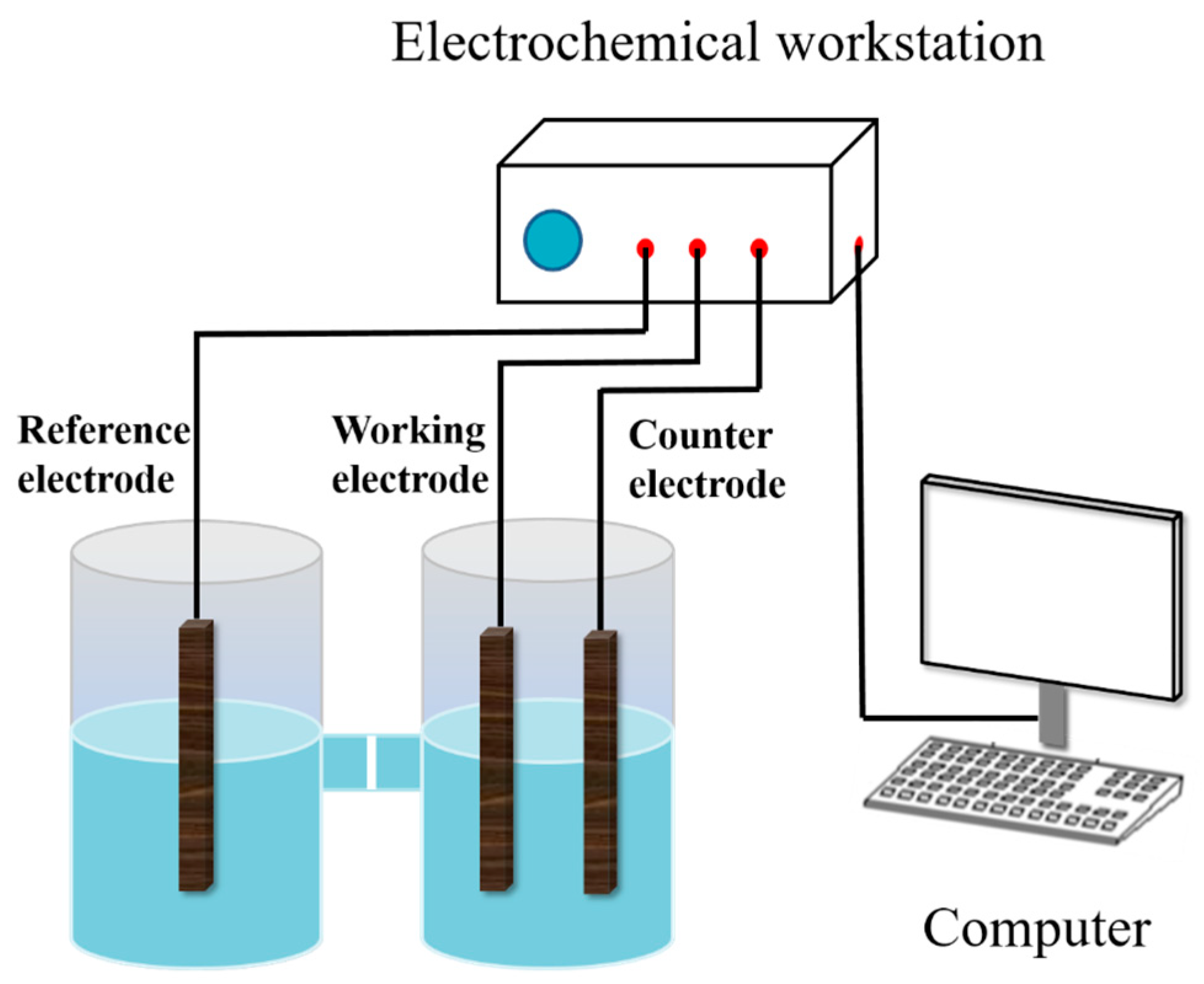
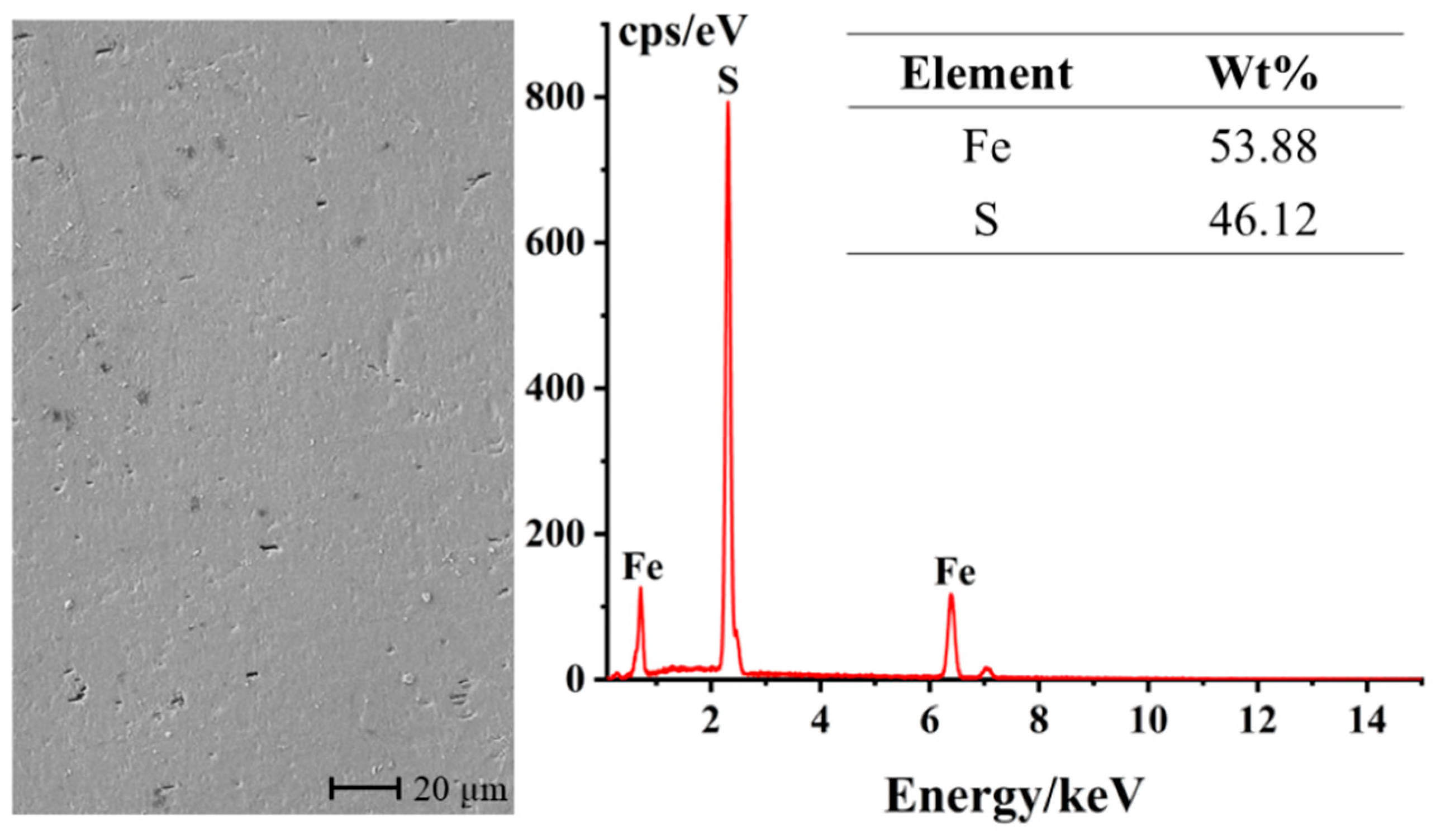
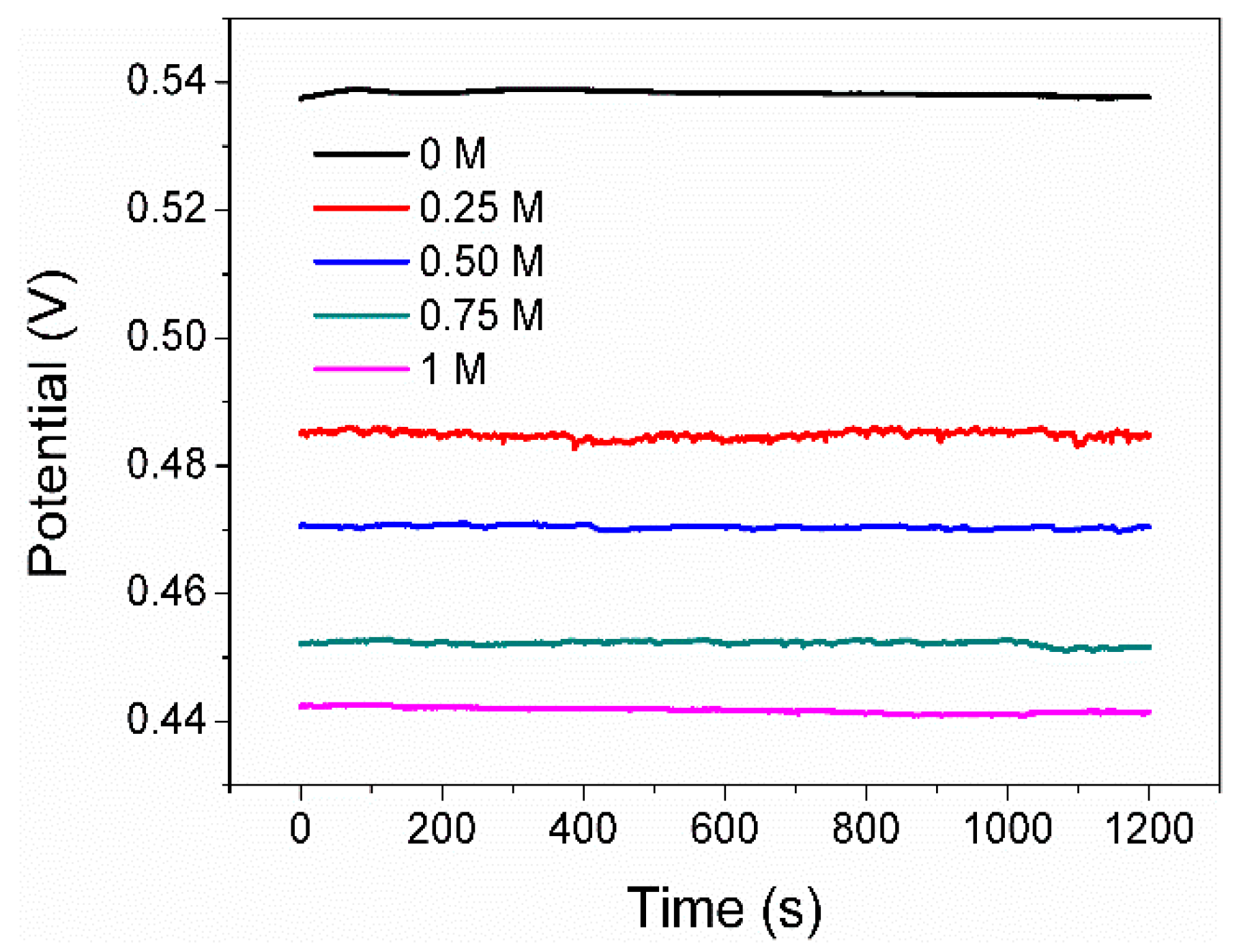
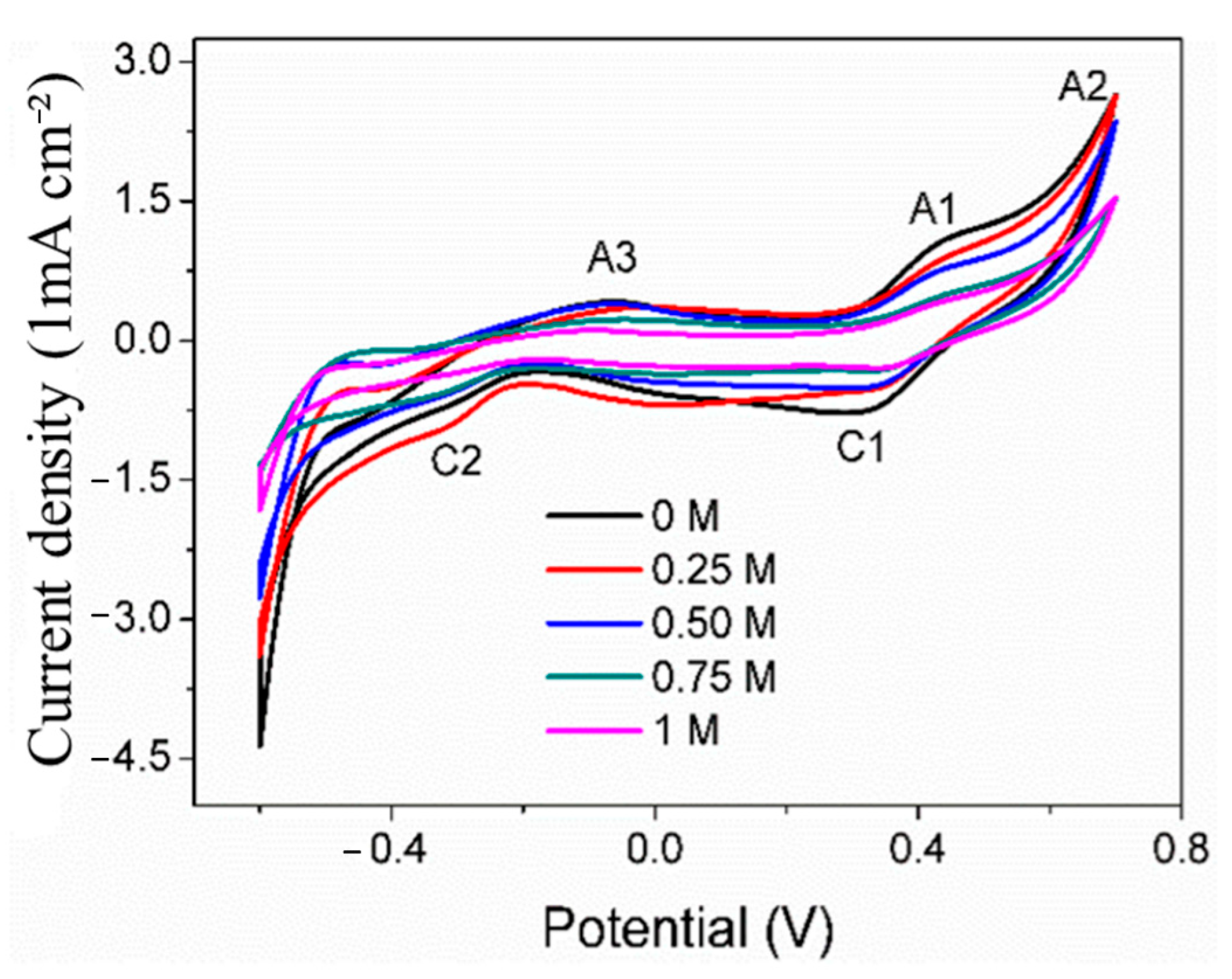
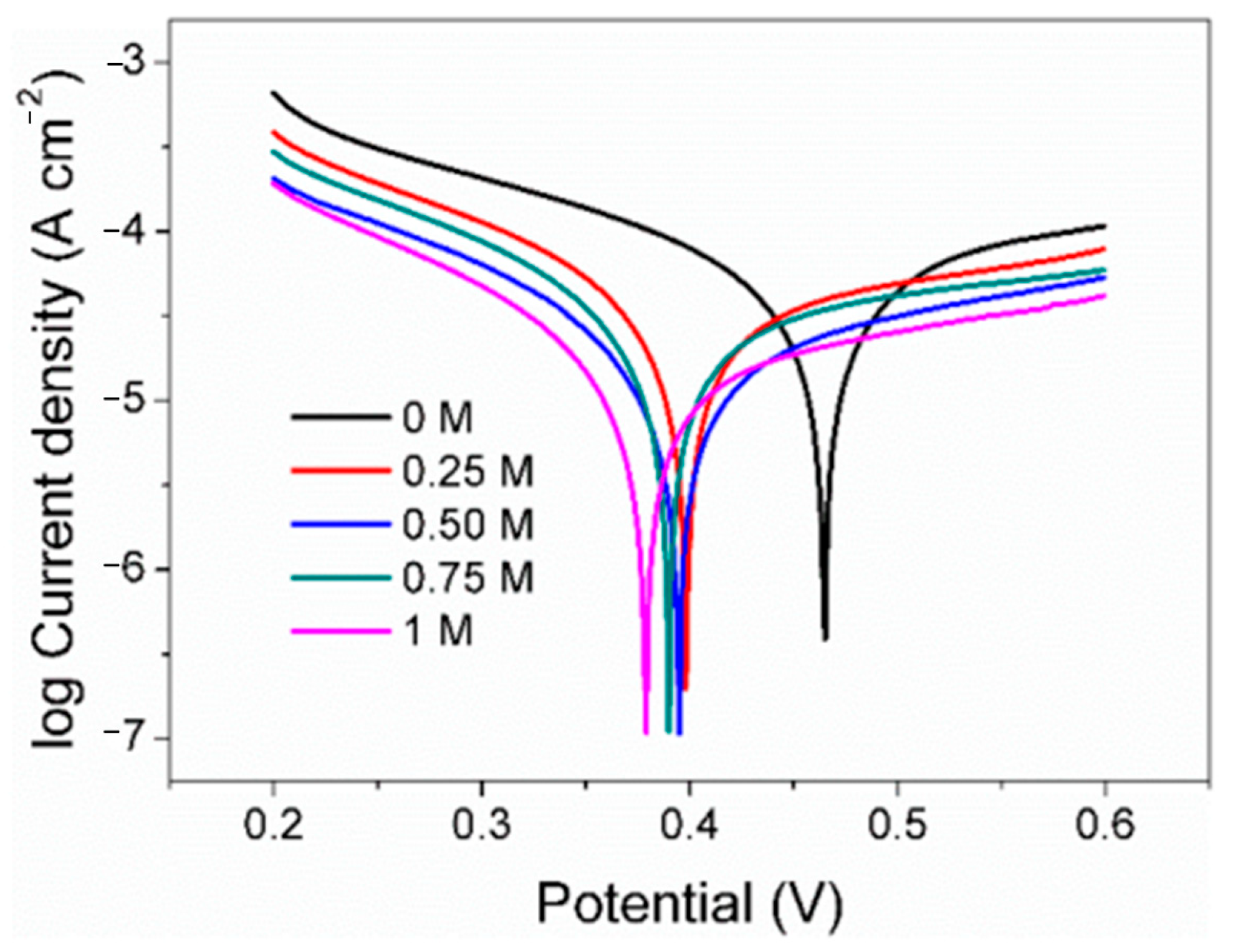
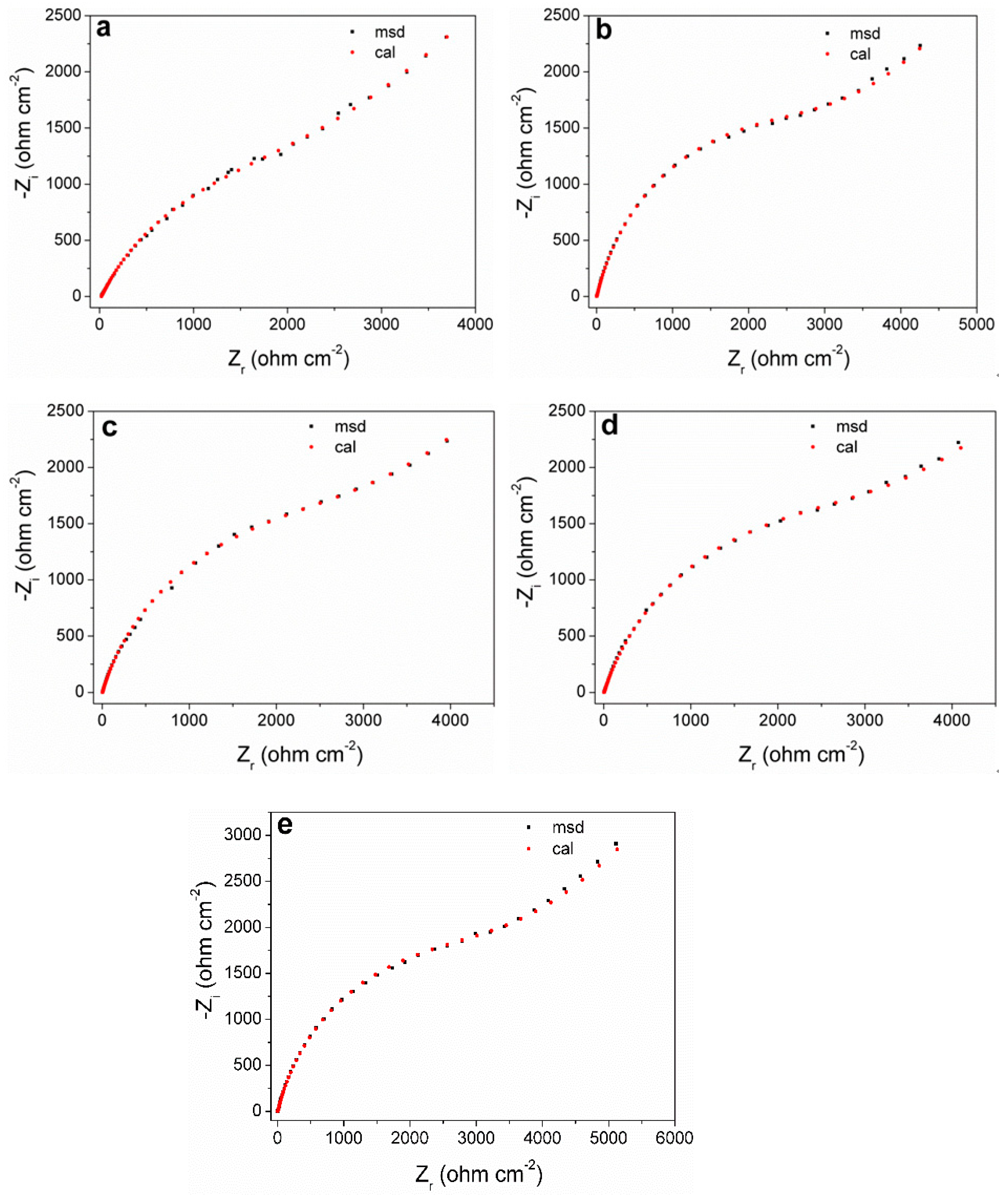
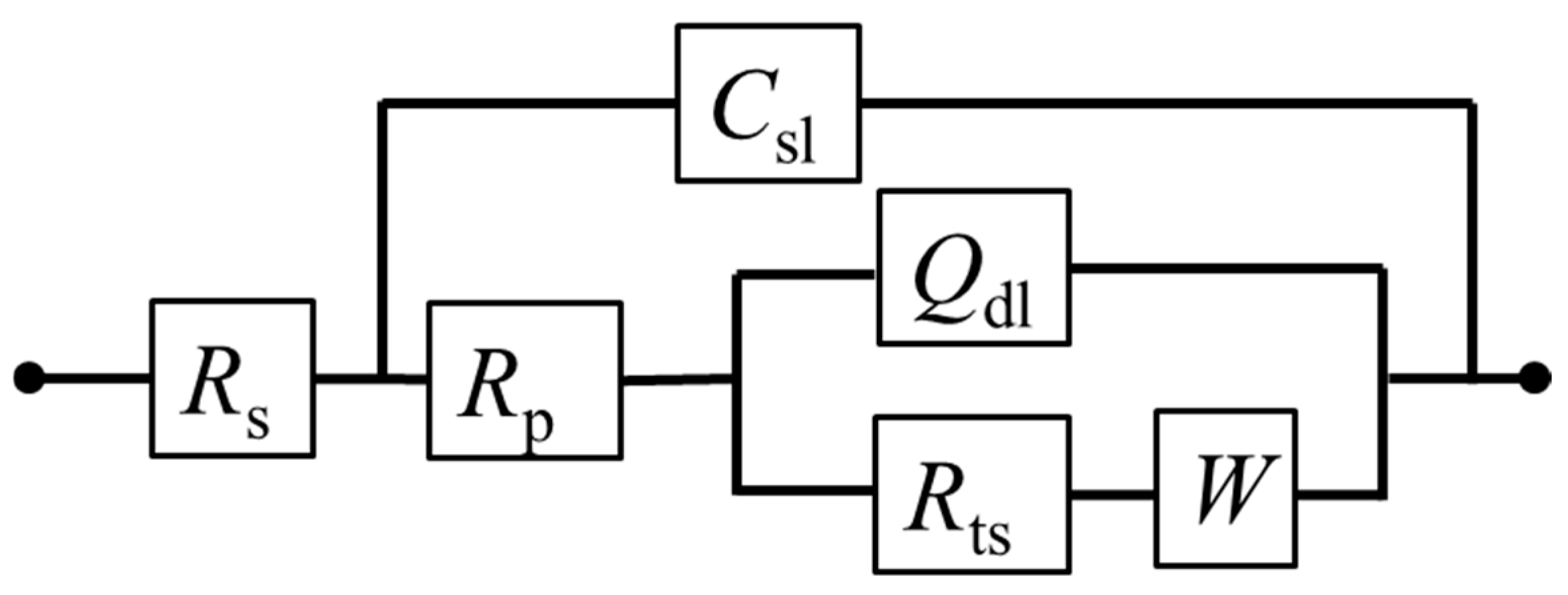
| SO42− (mol/L) | Ecorr (V) | RL (Ω cm−2) | βc (mV decade−1) | Βa (mV decade−1) | jcorr (10−5 A cm−2) |
|---|---|---|---|---|---|
| 0 | 0.465 | 760.3 | 117.8 | 114.9 | 8.67 |
| 0.25 | 0.398 | 1057.2 | 151.51 | 176.7 | 4.52 |
| 0.50 | 0.395 | 1323.4 | 180.6 | 219.4 | 3.75 |
| 0.75 | 0.390 | 2044.6 | 210.7 | 294.3 | 2.46 |
| 1 | 0.379 | 2298.8 | 245.6 | 324.1 | 2.28 |
| SO42−(mol/L) | 0 | 0.25 | 0.50 | 0.75 | 1 |
|---|---|---|---|---|---|
| Rs (Ω cm2) | 20.67 | 3.69 | 2.75 | 2.73 | 2.34 |
| Csl (10−7 F cm−2) | 2.17 | 1.81 | 1.75 | 1.52 | 1.03 |
| Rp (Ω cm2) | 23.87 | 3.08 | 5.31 | 5.82 | 6.74 |
| Rct (kΩ cm−2) | 3043 | 3326 | 3450 | 3694 | 3732 |
| W (10−4 S s0.5 cm−2) | 4.07 | 4.93 | 4.99 | 5.32 | 5.94 |
Disclaimer/Publisher’s Note: The statements, opinions and data contained in all publications are solely those of the individual author(s) and contributor(s) and not of MDPI and/or the editor(s). MDPI and/or the editor(s) disclaim responsibility for any injury to people or property resulting from any ideas, methods, instructions or products referred to in the content. |
© 2024 by the authors. Licensee MDPI, Basel, Switzerland. This article is an open access article distributed under the terms and conditions of the Creative Commons Attribution (CC BY) license (https://creativecommons.org/licenses/by/4.0/).
Share and Cite
Lv, S.; Liang, Y.; Zhang, X.; Tan, X.; Huang, Z.; Guan, X.; Liu, C.; Tu, Z. An Electrochemical Study of the Effect of Sulfate on the Surface Oxidation of Pyrite. Materials 2024, 17, 5145. https://doi.org/10.3390/ma17215145
Lv S, Liang Y, Zhang X, Tan X, Huang Z, Guan X, Liu C, Tu Z. An Electrochemical Study of the Effect of Sulfate on the Surface Oxidation of Pyrite. Materials. 2024; 17(21):5145. https://doi.org/10.3390/ma17215145
Chicago/Turabian StyleLv, Siqi, Yujian Liang, Xuezhen Zhang, Xiaomei Tan, Zuotan Huang, Xuan Guan, Chongmin Liu, and Zhihong Tu. 2024. "An Electrochemical Study of the Effect of Sulfate on the Surface Oxidation of Pyrite" Materials 17, no. 21: 5145. https://doi.org/10.3390/ma17215145
APA StyleLv, S., Liang, Y., Zhang, X., Tan, X., Huang, Z., Guan, X., Liu, C., & Tu, Z. (2024). An Electrochemical Study of the Effect of Sulfate on the Surface Oxidation of Pyrite. Materials, 17(21), 5145. https://doi.org/10.3390/ma17215145




